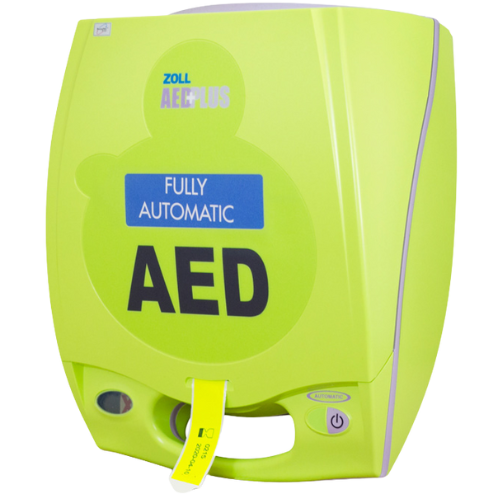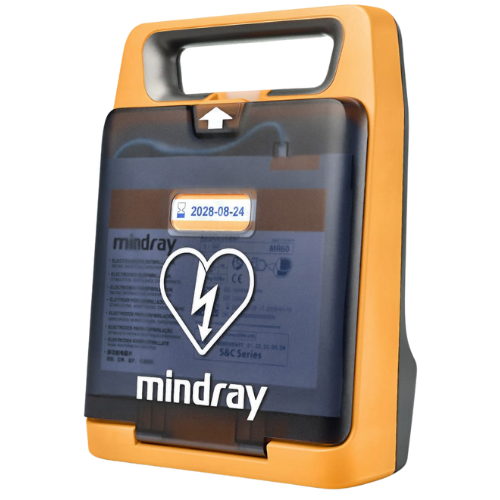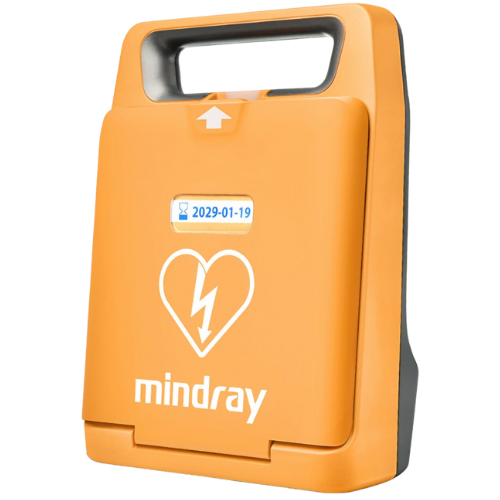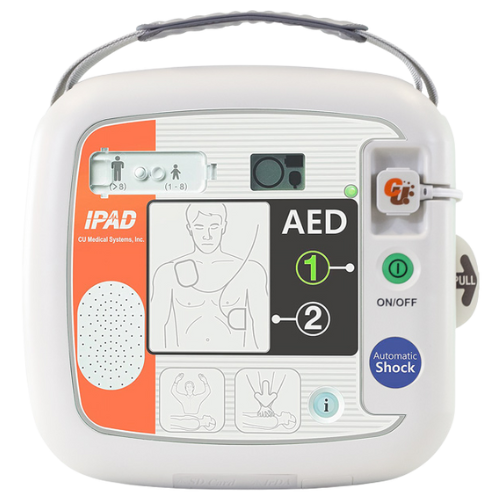Why Renting a Defibrillator is a Cost-Effective Solution
When considering whether to invest in a defibrillator (also known as an AED — Automated External Defibrillator), many decision-makers compare the cost of the device against doing nothing. But the “cost of doing nothing” is often underestimated.
It includes:
Loss of life and human cost. Sudden cardiac arrest (SCA) is one of the leading causes of death worldwide. Without timely defibrillation, survival rates outside hospital are very low.
Liability and reputational damage. If a cardiac emergency occurs on your premises and no AED is available, the legal and reputational consequences can be severe.
Regulatory or insurance pressures. In some sectors (e.g., sports, care settings), regulators or insurers may expect or require AED access; failing to comply may increase insurance premiums or risk fines.
Operational disruption. An incident may halt business, lead to investigations or reduce stakeholder confidence.
Deferred emergency cost escalation. If paramedics arrive late, secondary injuries or litigation costs may follow.
In short, doing nothing is not “free.” The potential human and institutional costs can dwarf the expense of providing access to defibrillation.
The Cost to Purchase and Maintain a Defibrillator
To evaluate rental versus purchase, we must first understand the costs of buying and running a defibrillator.
Upfront purchase costs
In the UK, a typical AED unit costs between £800 and £2,500, depending on model, features (e.g. WiFi connectivity, advanced monitoring) and whether the unit is indoor or outdoor. defibwarehouse.co.uk+3sja.org.uk+3seton.co.uk+3
You may also need to pay for an outdoor heated or weatherproof cabinet (£400–£600) defibrillators.bhf.org.uk and installation or electrical work (£200–£250) defibrillators.bhf.org.uk.
Package deals combining defibrillator, cabinet and accessories can exceed £1,600.
Ongoing running costs
Battery replacement, electrode pad replacement, software updates/firmware, self-tests, and routine maintenance & inspections (e.g. quarterly health checks) are required to ensure device readiness. The owner bears these costs. defibshop.co.uk+2lessstress.com+2
Training costs may be needed for staff or first aiders to use or familiarise with the AED, though many units are designed to be used by laypeople with minimal training. sja.org.uk+1
Upgrades or replacement if the device becomes obsolete, or in case of recall.
Over a 5- or 10-year lifespan, these costs accumulate. In some cases, the total cost of ownership (TCO) can approach or exceed double the initial purchase price, depending on frequency of component replacement and administrative overhead.
Why Renting a Defibrillator Can Be More Cost-Efficient
Given those purchase and running costs, renting becomes an attractive alternative for many organisations. Here’s how:
Low capital outlay
Renting or subscription models require little or no upfront capital. This allows businesses or organisations to access an AED without committing large sums.Predictable, inclusive costs
Rental packages typically bundle all maintenance, battery/pad replacements, software updates, and routine health checks into a flat monthly or daily fee. This reduces financial surprises and spreads cost evenly.Reduced administrative burden
The rental provider handles compliance, servicing schedules, consumables, and reminders. You do not need to monitor expiration dates or organize maintenance contracts yourself.Flexibility to upgrade
Over time, AED technology may advance (e.g. better diagnostics, wireless connectivity). A rental agreement often allows for upgrading to newer models without incurring the full cost of a replacement.Avoiding obsolescence or sunk cost risk
If your location, footprint or needs change, a rented device can be returned or relocated. You are not stuck owning a device you no longer need or that is outdated.Better risk management
Because maintenance and readiness are handled by the provider, the device is more likely to be in working order when needed, minimising the risk of failure at a critical moment.
As one cost comparison source notes, a rental rate for a Heartsine 360P (indoor) is about £0.98 + VAT per day (with higher rates for outdoor packages). Over a full year, that equates to a manageable fixed cost rather than unpredictable maintenance expenses.
Rent vs Buy: A Comparative Summary
If your organisation expects to use a defibrillator for many years and is comfortable managing maintenance, buying might eventually prove cost-efficient. But for many businesses, community groups, or public venues, renting offers a lower-risk and more manageable path.
Why Rent from DefibSpace?
Defib Space is the UK’s trusted provider of automatic defibrillators for rental. We offer fully inclusive, cost-effective packages for businesses and public spaces. Here’s what we bring:
All-inclusive rental: The rental cost covers the device, consumables (batteries and pads), health checks, software upgrades, and maintenance. You have predictable monthly costs.
Ready-to-use devices: Our automated defibrillators come ready to use — no training is strictly required, though training is beneficial. The units include clear voice prompts and automatic shock delivery to guide a rescuer.
Flexibility: You can rent for as long as you need, upgrade models if your needs change, or return the device if you relocate.
Risk mitigation: Because we manage maintenance and readiness, you reduce the risk of a non-operational device at a critical moment.
Focus on your business: With us handling the technical, regulatory and consumable aspects, you can focus on your core operations.
By comparing the cost of renting via Defib Space against the high purchase price and the hidden costs of doing nothing, the economic case becomes compelling.







